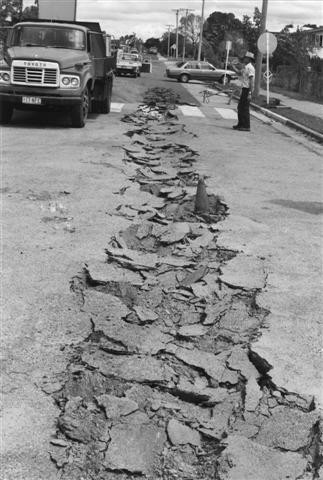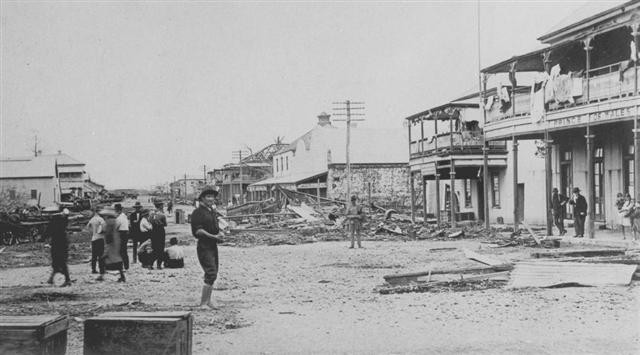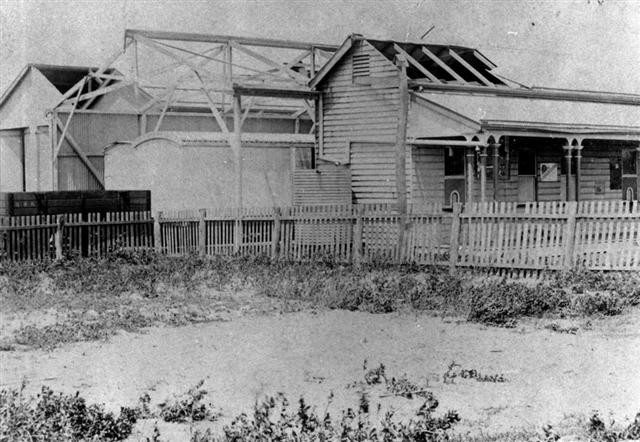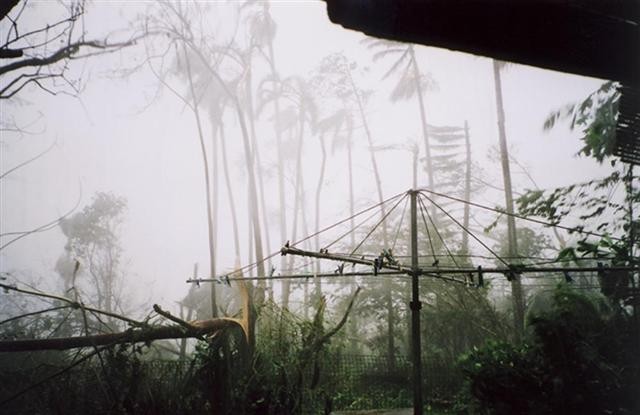Today, as I write a number of North Queensland coastal communities and island resorts are being evacuated and ports closed ahead of the imminent arrival of tropical cyclone Yasi, which is threatening to develop into one of the worst storms the state has seen.

Tropical cyclones in the Queensland region mostly form from lows within the monsoon trough, between November and April. These destructive weather events have always posed a serious threat to Queensland communities and industry.
Of course, as a result of the rainfall that cyclones generate, flooding occurs. The 1974 flood burst the banks of the Brisbane River after Tropical Cyclone Wanda caused heavy rains across South East Queensland.
On 20 Jan 1918 Mackay experiencd its worse natural disaster when a violent cyclone flatened the town killing 22 people. At the height of the storm a tidal wave 25 feet high submerged the township as far as Nebo Rd.

Perhaps the most deadly tropical cyclone to strike Queensland occured on 4 March 1899 when Cyclone Mahina hit a pearling fleet in Bathurst Bay north of Cooktown causing a storm surge accounting for over 400 fatalities.

Mahina, named by Government Meteorologist for Queensland Clement Wragge, was a category 5 cyclone, the most powerful of tropical cylone severity categories. It is said to be the most intense cyclones ever observed in the Southern Hemisphere.
In 2005 ABC jounalist Ian Townsend was awarded the John Oxley Library Fellowship for his research into this cyclone which resulted in his historical novel The Devil's Eye. Ian drew on Oxley collection items including newspaper articles, reports, images, diaries, and first hand accounts to create his story.

If you type the word cyclone into the State Library's One Search catalogue you will discover over 300 images recording the destruction caused by cyclones in Queensland.
Comments
Your email address will not be published.
We welcome relevant, respectful comments.